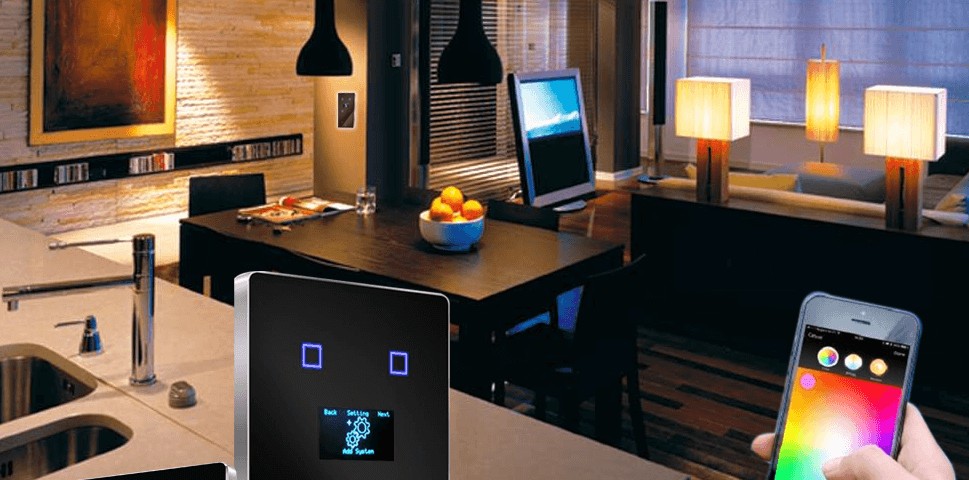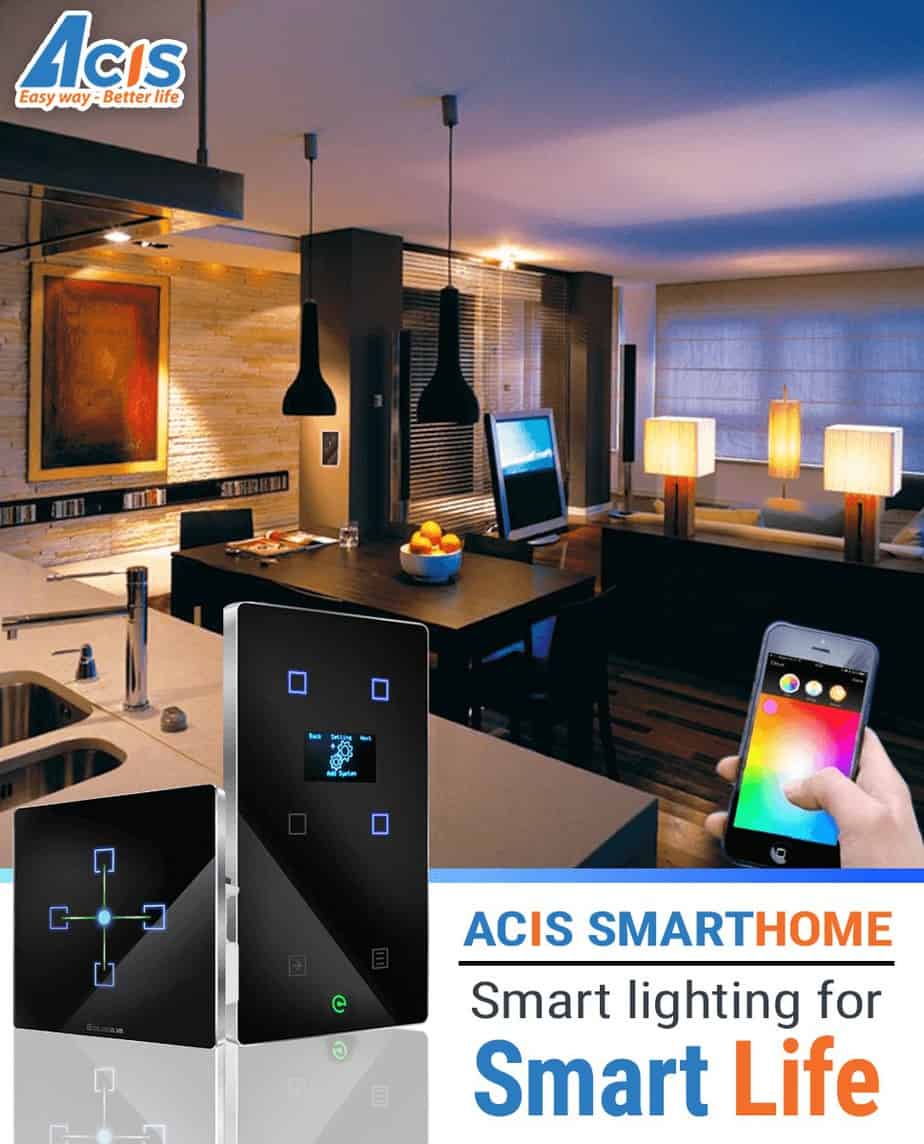EVERYTHING YOU NEED TO KNOW ABOUT THE SMART LIGHTING SYSTEM

Home automation may sound magical and ideological, but in reality, it is quite simple, logical and economical. Turning your home into a smart space means that the components you use every day in your home, such as appliances, thermostats or locks, work automatically.
Consequently, you can do the same with the way you illuminate your residential, commercial and even urban spaces. Smart lighting is becoming a key player in the field of home automation, and it is rapidly gaining popularity.
In addition, it is a simple and efficient way to control energy consumption and reduce the irrational expenditure of this resource that, although renewable, it is so scarce today. Learn in more detail what Smart lighting is and how it can help you reduce your bill while contributing to building a sustainable lifestyle.
What is smart lighting?
Smart lighting is the lighting that can be controlled from a mobile application, usually from an Apple or Android phone. These applications allow changing the brightness and intensity of the bulbs, and if the bulbs have colored LED spotlights, their colors can also be changed.
The communication between the bulbs works through different types of connections such as electrical wiring or wireless plugins. They send the signal to a control center connected to the web and through an interface it allows the user to control all aspects of the net.
This lighting technology designed for energy efficiency can include high-efficiency accessories and automatic controls that make adjustments based on conditions such as occupation or natural light availability.
This system, just like other home automation functions, provides a more efficient technique to manage lighting in spaces. In this way, costs in the electricity bill can be reduced and the environmental impact of excessive energy consumption can be reduced.
What you need to install an intelligent lighting system?
Smart lighting usually uses electrical networks, where each smart bulb is wirelessly connected to the nearest focus. This network is managed by a controller that connects to the Wi-Fi network, allowing other networked devices such as your phone or tablet to communicate with the bulbs.
Some systems also have a remote mode that allows you to control the lights when you are away, which is very useful if you forget to turn off the lights when leaving home. Not all systems require a hub, for example, the LIFX platform directly connects to your Wi-Fi.
You will often find that intelligent light systems can also be equipped with additional elements, such as intensity switches or motion detectors and in some cases, they can be linked to the IFTTT service (If This Then That) to create complex rules that activate particular actions.
Factors to consider before the installation
There are many options and possibilities when choosing the Smart lighting system to install. In the market, there are hundreds of suppliers and types of components. Therefore, there are some factors that we must consider before choosing one or the other so that they really meet our needs and integrate perfectly with other intelligent systems inside the house.
• Do you have any smart devices plugged at home that you would like to integrate with the lighting system? If you do, you will probably need to investigate compatible models.
• How many bulbs are you going to need? It is not the same to think about the system of a three-story house than a two-room apartment.
• Do you prefer to invest more at the beginning by purchasing LED bulbs that will have more advantages in the future?
• What intensities do you want for your light bulbs? Do you also want them to change to different colors and intensity?
• Will you need to program lighting routines according to your habits? Do you want to integrate the lighting into the security system?
Why should you install smart lighting in your home?
Smart lighting can be a new concept for you, but, although at first glance it seems to be just a tool to turn lights on and off, it is much more than that. It helps to simplify and improve the quality of life, being responsible for the use of resources. These are some of the benefits of installing smart lighting systems in your spaces:
Convenience and comfort: Think of all the lights in your home, the number of corresponding light switches and the amount of time you spend each day, especially at night, making rounds in your home to make sure they are off. With intelligent lighting, those days are over.
Personalization
There is much more you can do with smart lights besides turning them off or on remotely. With this system, you can determine which environment you want in any room with intelligent lighting functions such as dimming and color environment (according to the smart bulbs you installed).
Automate your lighting
You can program the lights according to your preferences. Among the options you can configure, is the possibility of choosing a power-up schedule to wake up in the morning or a general shut down before going to sleep. You can also combine systems and configure lighting as another component of the home security system.
Energy-saving
Besides offering advantages such as comfort, and modern touches to any space, intelligent lighting also allows you to easily avoid excessive energy expenditure and save on the electricity bill.
Security
Being able to remotely control the lights is a favorable point for home security. Thanks to this remote control programming feature, you can simulate the presence of someone on the premises when you are not going to be in the place.
The advantages offered by intelligent lighting are innumerable and increasingly more affordable and accessible. Considering installing this system in our spaces not only will benefit our daily lives but will be a great contribution to sustainability and responsible energy consumption. Was this article useful, tell us if you would install a smart lighting system in your home?
Source: primestone
- slot online mudah maxwin situs judi mpo slot situs judi mpo slot slot deposit dana slot 5000 slot 5000 slot 5000 slot 5000 slot 5000 link slot mpo link slot mpo link slot mpo link slot mpo link slot mpo mpo slot slot pay4d slot nexus slot idn slot online slot online slot online slot online slot online slot gacor slot hoki slot4d judi slot online hoki slot bca slot bri slot dana slot mandiri slot mpo slot 5000 slot88 slot pulsa 5000 slot dana 5000 slot maxwin slot303 slot77 judi mpo slot slot pulsa 5000 mpo slot bandar togel terpercaya mpo slot pay4d nexus slot idn slot mpo slot dana 5000 slot maxwin

